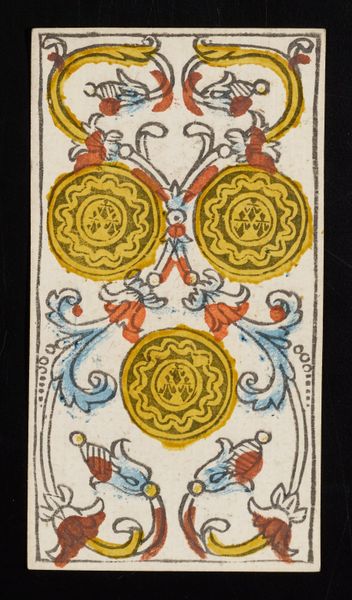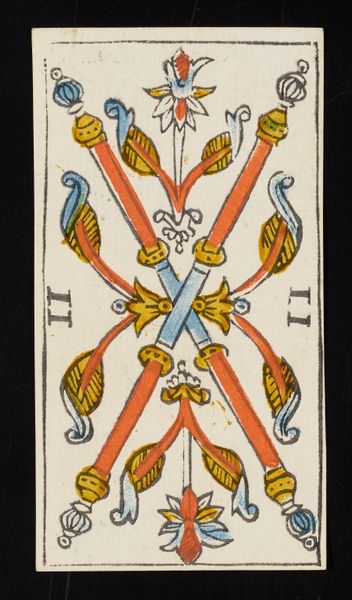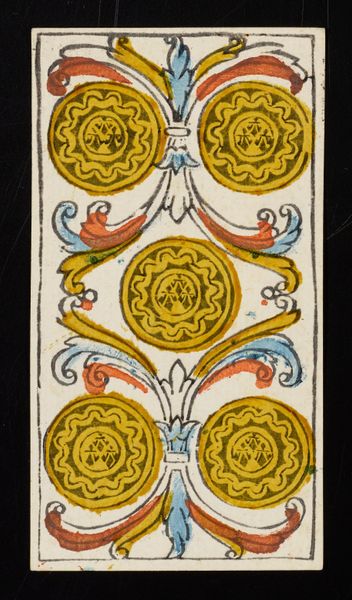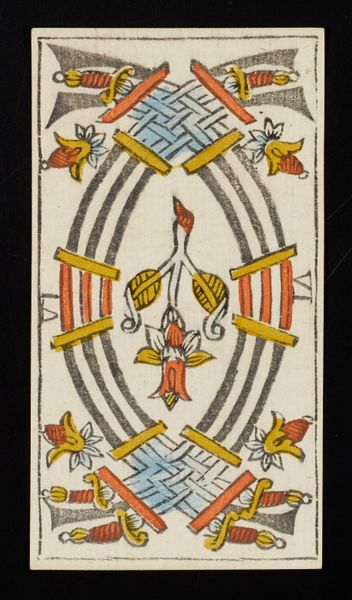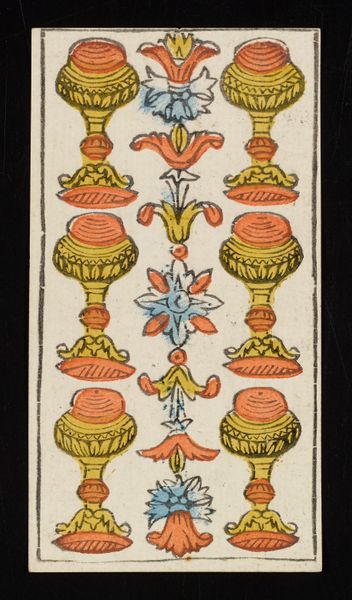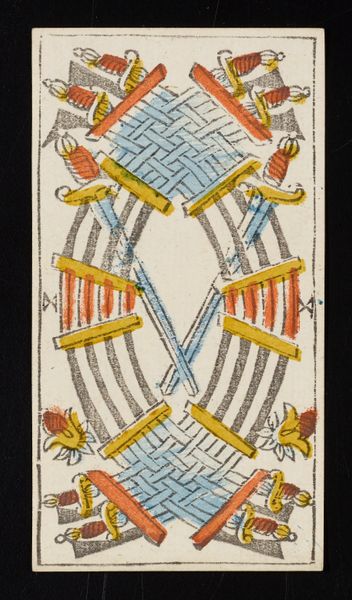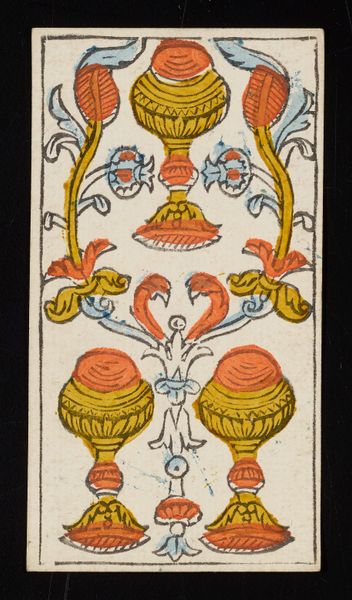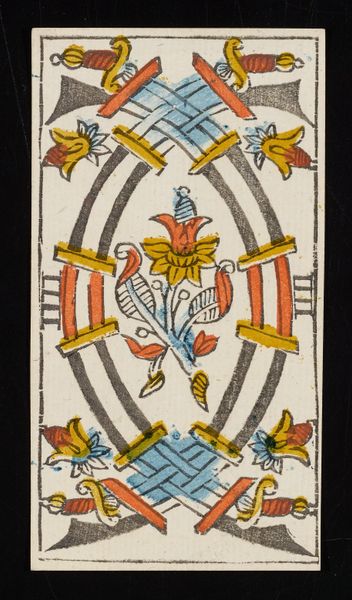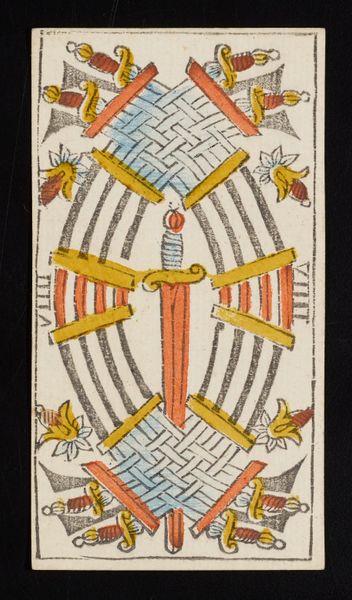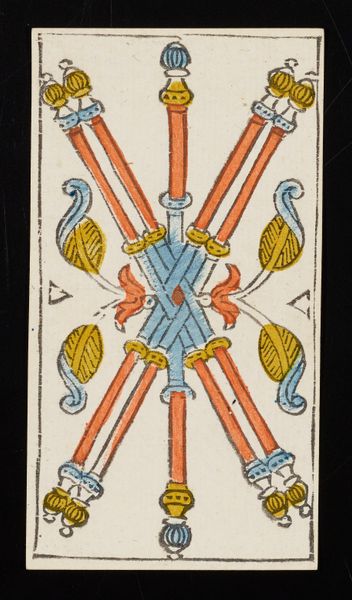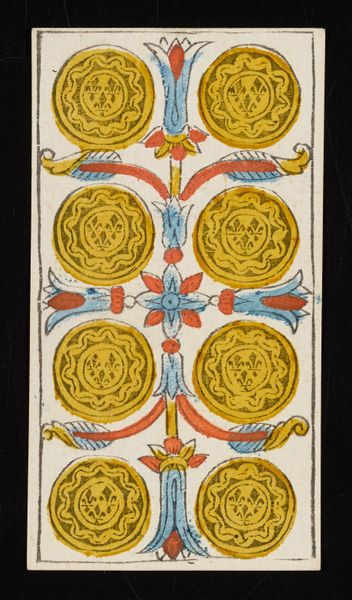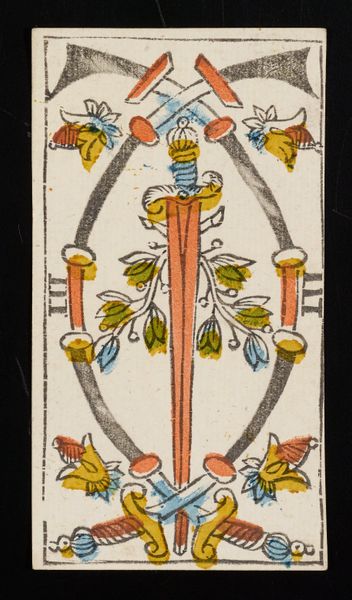
print, engraving
#
baroque
# print
#
figuration
#
decorative-art
#
engraving
Dimensions: 4 7/16 x 2 7/16 in. (11.27 x 6.19 cm) (image, sheet)4 5/8 x 2 1/2 in. (11.75 x 6.35 cm) (sheet, each)
Copyright: Public Domain
Editor: This is "Two of Swords" by Claude Burdel, an engraving from 1751. It has such a playful yet formal design. I'm curious, how do you interpret this work? Curator: This print offers an intriguing glimpse into the symbolic language of 18th-century tarot cards. Consider that these weren't just tools for games, but mirrors reflecting societal anxieties and power dynamics. How might we understand the duality represented by the swords in this context? Editor: Duality? It could represent balance? Curator: Exactly. The crossed swords suggest equilibrium, but within a deeply hierarchical society. Think about how justice and authority were often depicted, and for whom. The imagery of swords carries a distinct charge relating to those in power. Editor: So, you are suggesting the sword could also represent enforcement of rules? The tarot deck acting as social commentary on who benefits from established justice? Curator: Precisely! Look closely at the decorative elements – the stylized floral patterns and rigid structure. Could this be seen as a commentary on the performative aspects of power? How tradition and aesthetics work together to reinforce social norms? Editor: That's fascinating. I initially saw the decoration as simply ornamental, but now it seems deliberate, even critical. It also feels removed from our time now. Curator: Art is not created in a vacuum. Thinking critically about "Two of Swords", or any piece for that matter, reveals volumes about the artist and the world in which they lived. These types of decks give great perspective.
Comments
No comments
Be the first to comment and join the conversation on the ultimate creative platform.
